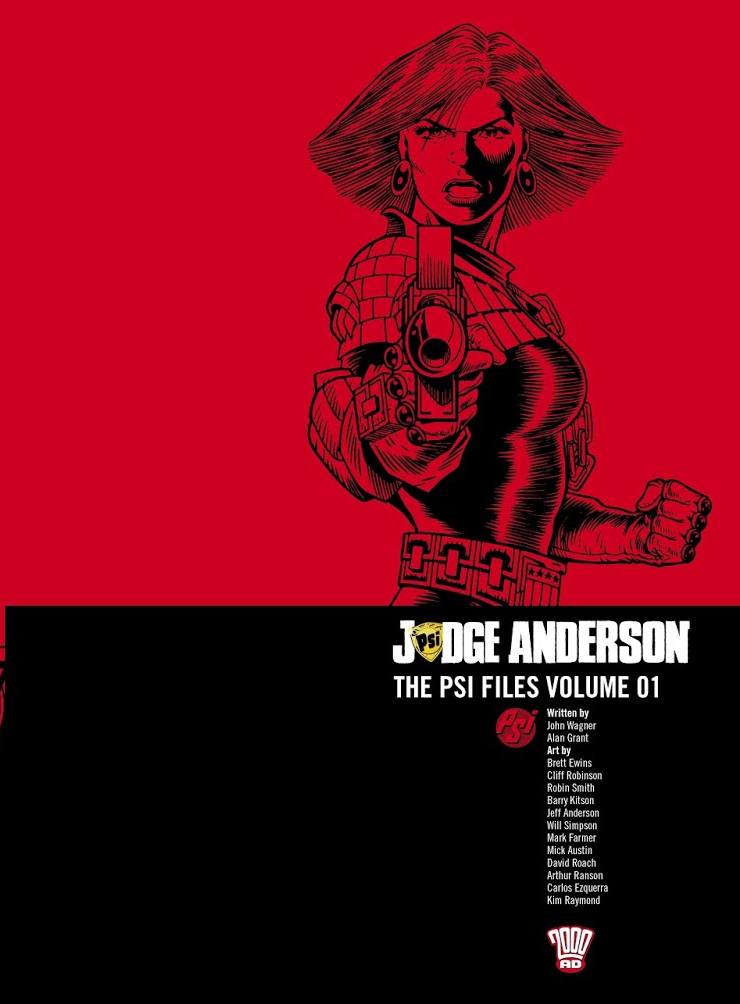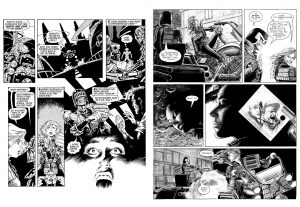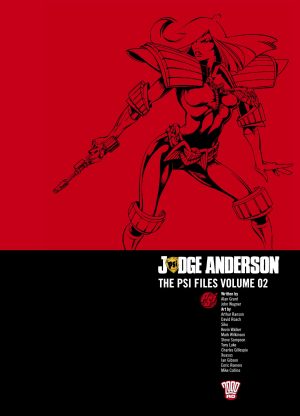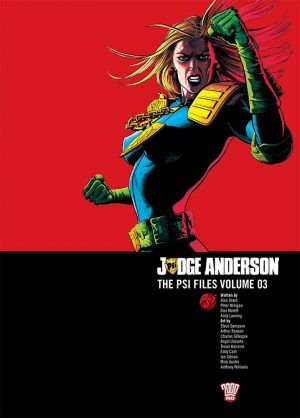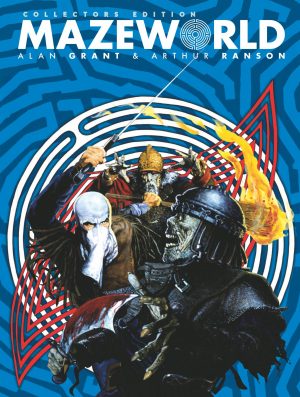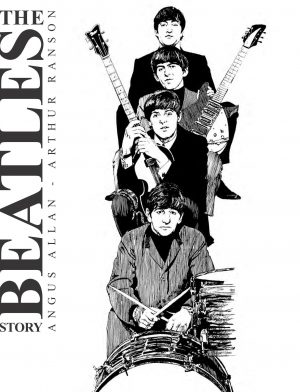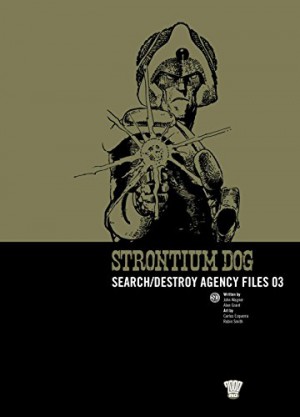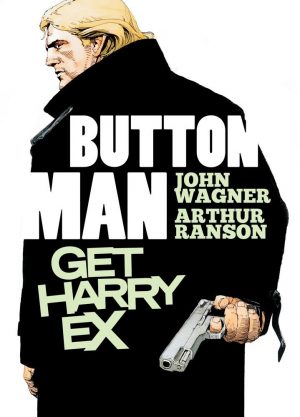Review by Karl Verhoven
Judge Anderson first appeared in the same story that introduced Judge Death, her psychic talents instrumental in his defeat, although at a cost to her. Co-creators John Wagner and Alan Grant gave her a lighter personality than Dredd, explaining a sometimes off-message personality being offset by her value to the Judges across a variety of mind-based talents. Introduced in 1980, she became an increasingly common supporting character before being given her first solo outing in 1985. This value for money collection gathers all her solo appearances to 1992, with around a third of the page count never previously seen in graphic novel format.
Wagner and Grant won’t count the first couple of stories among their most fondly remembered work. They’re basic explorations of Dredd’s world with a few concessions to psychic matters, and the opening return for Judge Death is going through the motions. What the earliest stories do prove is that like Dredd himself, Anderson can survive a wide variety of artistic interpretations, although to a greater or lesser degree almost all the earliest artists draw heavily on Brian Bolland, especially Brett Ewins (sample art left). The most attractive of them is David Roach (sample right) who takes his inspiration from the shading and inking. Barry Kitson, Arthur Ranson and Cliff Robinson also supply notable art, and it’s interesting seeing a rare pencilled story from Mark Farmer.
Grant rapidly became Anderson’s sole writer, and gradually distances her from the standard Mega-City Judge. She never wears a helmet, and her solutions can sometimes be the standard twenty years in the cubes, but can also be individual and surprising.
Some of this material has been available in other packages. The gold standard is Titan’s 1980s album sized editions with crisp reproduction on white paper with cover portraits by Garry Leach and John Bolton. They miss a couple of shorter outings, but over five volumes cover appearances to 1989. Start with Book 1 for greater detail about individual plots. A fair portion of strips also feature in Death’s Dark Dimension, and in the hardcover partwork editions The Possessed and Engram.
Roach uses an attractive grey wash for ‘The Prophet’ about a robot on a rampage. It’s slim with a clever twist, while Grant takes Luke Reinhart’s The Dice Man as inspiration for ‘The Random Man’, about a perp making decisions on the roll of a dice. It’s Carlos Ezquerra’s only Judge Anderson contribution, and it’s a weird one, a psychodrama with sexual undertones. “Not my fault, though”, considers Sam Laffin during his crime spree, “I mean, fate decreed it. The dice gave me my orders”.
Two further stories illustrated by Roach and never previously available in books grace the collection. ‘The Screaming Skull’ proves how good Grant is at fooling readers with his plots, and the longer ‘Engram’ is Roach topping even his great earlier art on an atmospheric thriller where Anderson can’t trust her own instincts. It’s a fantastic mystery, and very dark, although it should be noted it actually occurs after ‘Shamballa’, which opens Volume 02, That’s presumably because it’s a colour story and this volume is black and white.
430 pages showcase Grant’s versatility, the genre-straddling including mystery, horror, SF and crime and with a first class artist like Ranson or Roach on board, these strips really shine.
